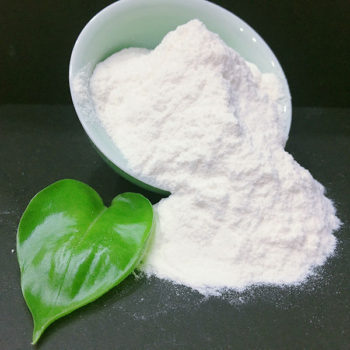Benefits of HPMC K100 in Pharmaceutical Formulations
HPMC K100, also known as hydroxypropyl methylcellulose, is a versatile ingredient that finds extensive use in pharmaceutical formulations. Its unique properties make it an ideal choice for various applications, offering numerous benefits to the pharmaceutical industry.
One of the key advantages of HPMC K100 is its ability to act as a binder in tablet formulations. Tablets are a popular dosage form due to their convenience and ease of administration. However, the challenge lies in ensuring that the tablet remains intact during handling and transportation. HPMC K100 addresses this issue by providing excellent binding properties, resulting in tablets with improved mechanical strength and reduced friability.
In addition to its binding properties, HPMC K100 also acts as a film-former in pharmaceutical coatings. Coating tablets serves multiple purposes, including improving the appearance, taste masking, and controlling the release of the active ingredient. HPMC K100 forms a uniform and flexible film on the tablet surface, providing protection against moisture, light, and other environmental factors. This not only enhances the stability of the tablet but also ensures controlled drug release, leading to improved therapeutic outcomes.
Furthermore, HPMC K100 exhibits excellent solubility in water, making it an ideal choice for oral solid dosage forms. When used as a disintegrant, it promotes the rapid disintegration of tablets or capsules in the gastrointestinal tract, facilitating drug dissolution and absorption. This is particularly beneficial for drugs with low solubility or those that require fast onset of action.
Another noteworthy feature of HPMC K100 is its compatibility with a wide range of active pharmaceutical ingredients (APIs). It can be used in combination with various drugs without affecting their stability or efficacy. This versatility allows formulators to develop complex formulations with multiple APIs, offering enhanced therapeutic benefits to patients.
Moreover, HPMC K100 exhibits excellent rheological properties, making it suitable for use in topical formulations. It imparts viscosity and improves the spreadability of creams, gels, and ointments, ensuring easy application and better patient compliance. Its non-irritating nature and biocompatibility make it a preferred choice for dermatological products, providing a soothing and protective effect on the skin.
In conclusion, HPMC K100 offers numerous benefits in pharmaceutical formulations. Its binding properties enhance tablet strength and reduce friability, while its film-forming capabilities protect tablets and control drug release. Its solubility and compatibility with various APIs make it suitable for oral solid dosage forms, promoting drug dissolution and absorption. Additionally, its rheological properties make it ideal for topical formulations, improving spreadability and patient comfort. With its versatility and unique features, HPMC K100 continues to play a crucial role in the development of innovative and effective pharmaceutical products.
Applications of HPMC K100 in Cosmetic Products
Applications of HPMC K100 in Cosmetic Products
HPMC K100, also known as Hydroxypropyl Methylcellulose, is a versatile ingredient that finds numerous applications in the cosmetic industry. Its unique properties make it an ideal choice for a wide range of cosmetic formulations. In this section, we will explore some of the key applications of HPMC K100 in cosmetic products.
One of the primary uses of HPMC K100 in cosmetics is as a thickening agent. It has the ability to increase the viscosity of formulations, giving them a desirable texture and consistency. This is particularly useful in products such as creams, lotions, and gels, where a thicker consistency is desired. HPMC K100 helps to improve the spreadability of these products, making them easier to apply and ensuring even coverage on the skin.
In addition to its thickening properties, HPMC K100 also acts as a film-forming agent. When applied to the skin, it forms a thin film that helps to lock in moisture and protect the skin from external factors. This makes it an excellent choice for moisturizers, sunscreens, and other skincare products. The film-forming properties of HPMC K100 also contribute to the long-lasting effects of these products, ensuring that the skin remains hydrated and protected for an extended period.
Another important application of HPMC K100 in cosmetics is as a suspending agent. It helps to prevent the settling of solid particles in formulations, ensuring that the product remains homogeneous and stable over time. This is particularly beneficial in products such as shampoos, conditioners, and body washes, where the suspension of active ingredients or exfoliating particles is crucial for their effectiveness. HPMC K100 ensures that these particles are evenly distributed throughout the product, providing consistent performance with each use.
Furthermore, HPMC K100 is often used as a binder in cosmetic formulations. It helps to hold the ingredients together, ensuring that the product maintains its shape and structure. This is particularly important in products such as pressed powders, eyeshadows, and blushes, where the formulation needs to stay intact during application and use. HPMC K100 provides the necessary binding properties, allowing these products to be easily applied and providing a smooth and even finish.
In addition to its functional properties, HPMC K100 also offers benefits for the skin. It has moisturizing properties, helping to hydrate and nourish the skin. This makes it a valuable ingredient in skincare products, especially those targeted towards dry or sensitive skin. HPMC K100 also has a soothing effect on the skin, making it suitable for products designed to calm and alleviate irritation.
In conclusion, HPMC K100 is a versatile ingredient that finds numerous applications in cosmetic products. Its thickening, film-forming, suspending, and binding properties make it an ideal choice for a wide range of formulations. Additionally, its moisturizing and soothing effects on the skin further enhance its value in skincare products. Whether it is a cream, lotion, gel, or powder, HPMC K100 contributes to the overall performance and efficacy of cosmetic products, ensuring that they meet the desired standards of texture, consistency, and functionality.
Key Features of HPMC K100 in Food Formulations
HPMC K100: Key Features and Applications in Formulations
HPMC K100, also known as Hydroxypropyl Methylcellulose K100, is a versatile ingredient that finds extensive use in various industries, including food formulations. This article will delve into the key features of HPMC K100 in food formulations and explore its applications in this field.
One of the primary features of HPMC K100 is its ability to act as a thickening agent. In food formulations, it helps create a desirable texture and consistency in products such as sauces, dressings, and soups. Its thickening properties are particularly useful in achieving a smooth and creamy texture, enhancing the overall sensory experience for consumers.
Furthermore, HPMC K100 also acts as a stabilizer in food formulations. It helps prevent the separation of ingredients, ensuring that the product remains homogeneous and visually appealing. This feature is especially crucial in emulsions, where HPMC K100 helps maintain the stability of oil-in-water or water-in-oil systems.
Another notable feature of HPMC K100 is its film-forming ability. When used in food formulations, it can create a protective barrier on the surface of products, extending their shelf life. This is particularly beneficial in bakery products, where HPMC K100 helps retain moisture, preventing staleness and maintaining freshness for a longer duration.
In addition to its key features, HPMC K100 also offers several advantages in food formulations. Firstly, it is a non-ionic polymer, meaning it does not interact with other ingredients or alter their taste. This makes it an ideal choice for applications where the flavor profile of the final product is of utmost importance.
Moreover, HPMC K100 is highly soluble in water, making it easy to incorporate into formulations. It dissolves quickly, eliminating the need for extensive mixing or processing, thereby saving time and energy during production. This solubility also ensures that HPMC K100 is evenly distributed throughout the product, providing consistent performance.
Moving on to its applications in food formulations, HPMC K100 finds widespread use in dairy products. It helps improve the texture and mouthfeel of yogurts, ice creams, and puddings, giving them a smooth and creamy consistency. Additionally, it prevents the formation of ice crystals in frozen desserts, enhancing their overall quality.
Furthermore, HPMC K100 is utilized in bakery products such as bread, cakes, and pastries. Its film-forming ability helps retain moisture, preventing the products from becoming dry and crumbly. It also improves the volume and structure of baked goods, resulting in a softer and more appealing texture.
In the beverage industry, HPMC K100 is employed in the production of fruit juices and smoothies. It acts as a thickener, enhancing the mouthfeel and viscosity of these beverages. Additionally, it helps stabilize suspensions, preventing the settling of particles and ensuring a consistent appearance.
In conclusion, HPMC K100 is a valuable ingredient in food formulations, offering key features such as thickening, stabilizing, and film-forming properties. Its non-ionic nature and high solubility make it an excellent choice for applications where taste and ease of incorporation are crucial. With its wide range of applications in dairy, bakery, and beverage products, HPMC K100 plays a significant role in enhancing the texture, stability, and overall quality of food formulations.
Q&A
1. What are the key features of HPMC K100?
HPMC K100 is a hydroxypropyl methylcellulose polymer that offers excellent film-forming properties, high viscosity, and good thermal stability.
2. What are the applications of HPMC K100 in formulations?
HPMC K100 is commonly used as a thickening agent, binder, and film former in various pharmaceutical, cosmetic, and personal care formulations. It is also used in coatings, adhesives, and construction materials.
3. Are there any specific benefits of using HPMC K100 in formulations?
Yes, HPMC K100 provides improved stability, controlled release, and enhanced adhesion properties in formulations. It also offers good compatibility with other ingredients and can be easily modified to suit specific formulation requirements.


